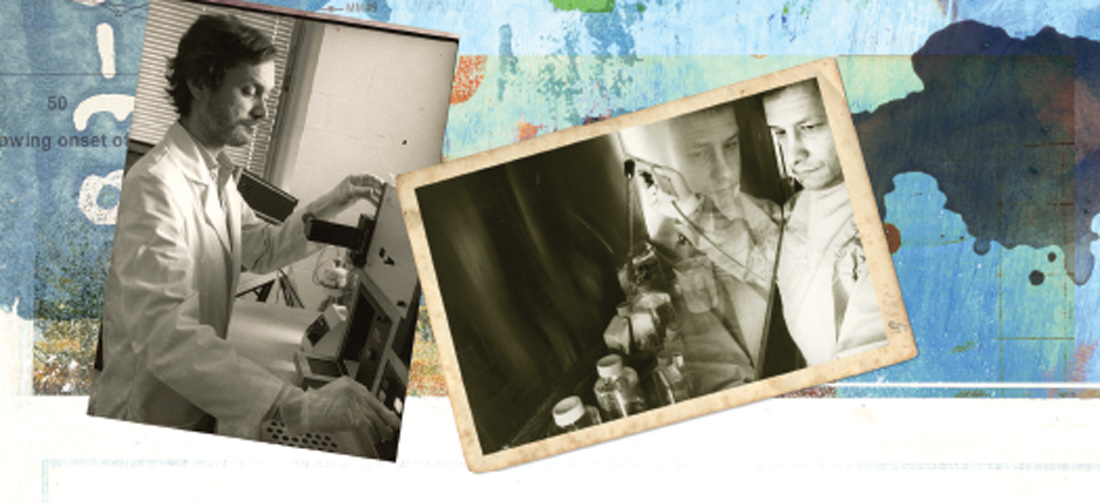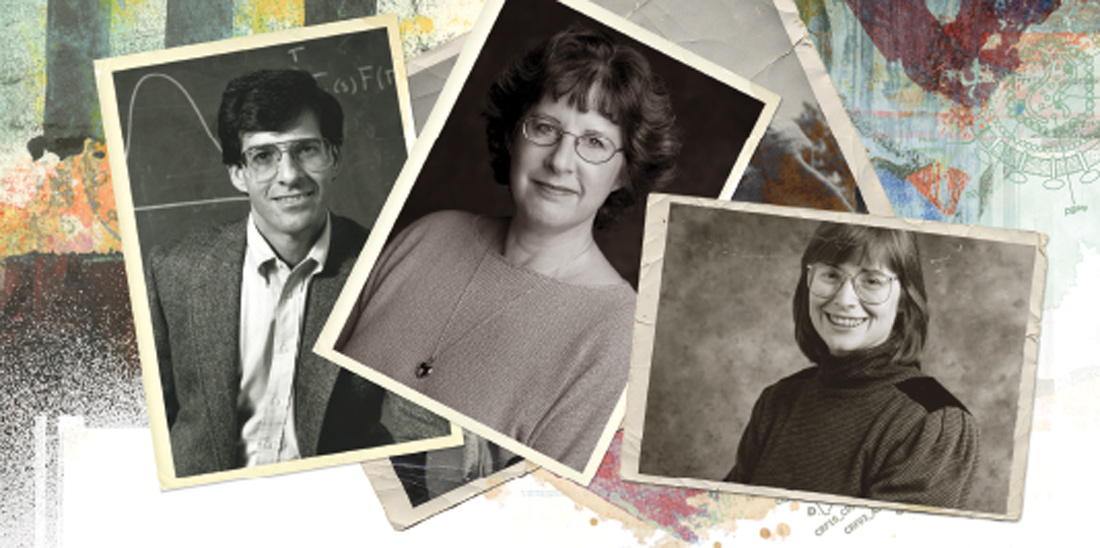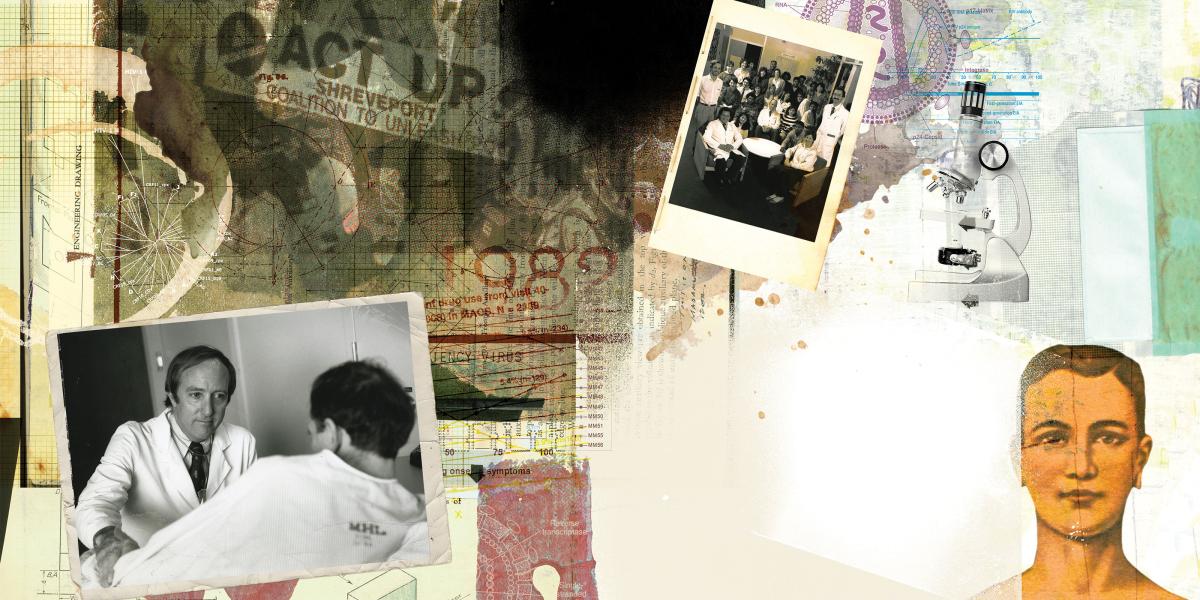The Early Days of the World's Longest-Running AIDS Cohort Study
An oral history of the origins of the Multicenter AIDS Cohort Study.
Even before the terms HIV and AIDS had been coined, Johns Hopkins researchers were seeking ways to prevent, diagnose and cure this life-altering, world-changing disease. In 1982, B. Frank Polk, MD, began studying what was then known as “Gay-Related Immunodeficiency Disease,” or GRID. The following year he and colleagues began studying a small group of AIDS outpatients at Johns Hopkins Hospital. With a $7 million NIH grant in 1983, Polk launched the Study to Help the AIDS Research Effort (SHARE). It followed 1,153 asymptomatic men who have sex with men (MSM) to learn about AIDS’s cause and risk factors.
In 1984, SHARE joined three other NIH-funded research sites to form the Multicenter AIDS Cohort Study (MACS). The prospective study of HIV-1 infection in MSMs has since become the world’s longest-running AIDS cohort study and has produced some of the most fundamental knowledge used to prevent and treat AIDS. MACS is ongoing with 1,393 participants in the Baltimore site, some of whom have been examined twice each year for more than three decades.
This is the story of the early years of MACS—a time when testing positive for HIV was transformed from a death sentence to a treatable chronic condition.
ORIGINS OF THE RESEARCH
When SHARE began in 1983, just over 3,000 AIDS cases had been reported to the CDC, 40 percent of which had already resulted in death. Researchers didn’t know its cause. No treatment existed.
David Celentano, ScD ’77, MHS ’75, chair of Epidemiology since 2009; JHSPH faculty since 1978 in Behavioral Sciences (precursor to Health, Behavior and Society), Health Policy and Management, and Epidemiology:
Frank [Polk] was a great big Texan who introduced himself [to me] by saying, “I hear you’re the questionnaire guy. I need a questionnaire on how gay men have sex. I know you know all about sex.” [I said], “Well, I’m doing studies on cervical cancer, so I know how to take sexual history from women. But I don’t know anything about gay men.”
Polk assembled groups of six to eight gay men, who met for focus groups with us at a downtown Baltimore hotel. With a tape recorder and a list of 15 questions, we conducted eight or 10 sessions of two to three hours, in about a three-week period.
Ron Brookmeyer, PhD, Biostatistics faculty, 1981–2010; principal investigator, NIH R01 grant, Statistical Methods in AIDS Research, 1988–2002:
Frank Polk was very dynamic, charismatic. When he set his eye on something, he went for it. He was pretty aggressive, but with a magnetic personality.
Chris Camp, 62, MACS participant since 1987; chair of MACS Community Advisory Board since 1988:
Most of us folks who enrolled early on got involved because we wanted to make a difference in the fight against HIV/AIDS, and we knew the research would make a real strong impact on the epidemic.

BLOOD SAMPLES DRIVE DISCOVERY
AIDS could only be diagnosed by its symptoms until April 1984, when Robert Gallo at the National Cancer Institute identified the cause: human T-lymphotropic virus type 3, renamed human immunodeficiency virus—HIV—in 1986. One of the first tasks of the MACS researchers was to collect enough virus from patients to facilitate laboratory analysis to reveal the pathways leading to initial HIV infection, and then explain how the disease progressed to clinical AIDS and death.
Lisa Jacobson, ScD ’95, MS ’86, professor in Epidemiology and senior research coordinator of the Center for the Analysis and Management of the MACS Data, 1987–95:
We had the specimens and data from before and after [600 participants] became infected. They are a very powerful group of individuals who greatly improved our understanding about the factors related to HIV infection and AIDS progression. The MACS samples are highly sought after by researchers from the entire world.
Polk initially feared that the thousands of biosamples collected from the study participants at six-month intervals would be destroyed because the freezers he bought to store them could not maintain a constant temperature of minus 80 degrees Celsius.
Homayoon Farzadegan, PhD, professor in Epidemiology and founding director of the first HIV/AIDS laboratory at Johns Hopkins and the Johns Hopkins Biological Repository:
The double-compressed freezers use a lot of electricity and generate a lot of heat, so they used to break down a lot. Frank contacted one of the manufacturers and complained, “They can keep food frozen, why not blood?”
I kept ordering freezers as we collected more and more specimens. By 2011, we had 110 freezers in the basement that were all hooked up to alarm systems—they called me and said, “Freezer number 67 is on alarm,” and then 10 minutes later “68 is on alarm.” We had to keep freezers empty in case we had to transfer samples while we repaired the malfunctioning freezers.
In 2012, the School leadership helped me borrow $5 million to buy 60 cryogenic units to start the Johns Hopkins Biological Repository. We moved 2.5 million specimens into big tanks of liquid nitrogen. That was one of my major accomplishments at the School, and I hope I leave that as my legacy.
Joseph Margolick, MD, PhD, professor in Molecular Microbiology and Immunology; director, Human Immune Assessment Laboratory and Flow Cytometry Laboratory since 1986; PI of the MACS Baltimore site since 1997:
Flow cytometry enabled us to study the types of immunologic abnormalities that people were getting with HIV. Some of them were so profound that they just jumped out at you. We knew that there was depletion of CD4 T cells, but with the flow cytometer you could document it much more accurately on many more people. So that’s what really facilitated the development of cohort studies [like MACS] that would study lots of people over time.
It told us that HIV was characterized by a lot of immune activation in cells that were not the normal resting cells that circulate. The more activated they were, the more likely the person was to get sick soon and to die soon.

THE POWER OF DATA
Designing the MACS and determining its sample size was difficult because the AIDS epidemic’s size and scope were still unknown. Without a diagnostic blood test, no one could guess the incidence of HIV nor the incubation period from initial infection until the surfacing of clinical symptoms. Based on early CDC case reports, Baltimore was expected to have a low HIV infection rate compared to San Francisco or Chicago. Soon after the FDA approved the first HIV test in 1985, however, MACS researchers announced that a shocking 30 percent of the 1,153 Baltimore participants were already incubating the disease—double the expected number.
Ron Brookmeyer: One of the things we learned was that the incubation period was not one or two or three years, but on average it was closer to 10 years. We began to realize that we were seeing the tip of the iceberg, just the symptomatic AIDS cases, with a much larger number [of participants] who were infected but asymptomatic.
That iceberg concept led me to develop a statistical methodology called back calculation. I synthesized data from many places, including the MACS, to determine the number of AIDS cases already reported to CDC, and then asked, How many people must already be infected to give rise to what we’ve seen so far?
A 1987 Lancet article by Brookmeyer and Mitchell Gail used new MACS data to predict the number of future AIDS cases that would emerge from the infections already reported to CDC. They concluded that “the AIDS epidemic poses a major public health problem in the next 5 years [that] will greatly exceed the 27,519 cases reported to CDC by Nov. 10, 1986.”
A very famous CDC epidemiologist, Alexander Langmuir [who left the School’s Epidemiology faculty in 1949 to found the Epidemic Intelligence Service at the CDC], published a 1990 JAMA paper that used Farr’s Law to predict the epidemic would be completely over in six years because epidemics behave like normal curves. The lesson is you can’t always just extrapolate to curves. When Langmuir visited Hopkins, we discussed why we had reached different conclusions. He didn’t take it personally and was very fatherly and kind to me. I have used his example in teaching about Farr’s Law and the dangers of extrapolation curves.
Homayoon Farzadegan: The polymerase chain reaction (PCR) test, which quantifies HIV RNA per one milliliter of blood, became available in ’86 and revolutionized measuring the viral load [the amount of HIV present in a patient’s blood]. With the beauty of having the biorepository and samples available, we did a nested case-control study. We got blood samples from the person who [later] developed AIDS in 10 years and the person who didn’t develop AIDS in 10 years, and we measured the viral load in their samples over time. At time zero, they were both infected, but one went rapidly down, [and] the other one stayed healthy. The one who went rapidly down had a higher viral load [at the beginning]. And for the first time, the MACS study proved that viral load can be used as a strong predictor of progression to AIDS.
Robin Fox, MS, director of the MACS Baltimore site and research associate in Epidemiology, 1983–89; associate dean for academic affairs, 1996–2008:
Once the blood test became available, it helped produce all the scientific advances, but it also meant telling people about their test results. If they were in a couple, we had to test to see if the couples were concordant [i.e., both members were HIV positive]. That was a really big milestone.
Lisa Jacobson: Usually, changes in public health are incremental. We build upon knowledge little by little before we see impact or translation into implementation. With HIV and the MACS, our results were immediately publicized and used for guidelines, and people would build on their scientific impact. It was a little scary to know that everything you were doing was highly visible and had that immediate impact. There weren’t a lot of studies at that time to replicate your findings, because MACS was highly unique.
DESPAIR, ACTIVISM AND HOPE
Without effective drug treatments, AIDS led almost inevitably to death. In 1987, AIDS activists founded ACT UP (AIDS Coalition to Unleash Power) to pressure policymakers and medical researchers to find a cure for AIDS.
Robin Fox: I would conduct very prescribed interviews about people’s very graphic sex lives and [drug use], whatever they were doing, and it was very interesting. The hardest part was that these people my own age—in their early 30s, who I came to like very much—would get sick, and there was nothing we could do about it before AZT. I used to keep a stack of sympathy cards in my desk.
It was upsetting to see people just trying to live their lives be stigmatized because they were sick or gay or whatever. They felt they had no one to talk to about it. People in the study who were in the military and very highly placed in government ended up with Kaposi’s sarcoma lesions, [would ask] me, “How do you cover it with makeup?”
Lisa Jacobson: We’ve seen retention rates in the MACS that you just don’t see in clinical trials. And a lot of that’s due to the wonderful staff at each of the sites reaching out, sending notes and cards, asking how they’re doing. The MACS participants taught me that it’s not just numbers on paper or in a computer. When I give a talk on Kaposi’s sarcoma, I make sure people see a leg with KS lesions on it. That makes me think about people and why, prior to effective treatments, AIDS was devastating.
Homayoon Farzadegan: We saw a lot of tragedies. HIV-infected people came to my office and cried. Tears would fall on my knees because there was nothing to help them.
AIDS was different than any other disease that I have experienced in my academic life, in that the infected individuals were quite active. ACT UP came to all of our scientific meetings—NIH, local, national, international meetings, especially San Francisco. Sometimes they insulted us, sometimes they supported us, and sometimes they blocked the FDA entrance.
We were among the five universities that started the AIDS Clinical Trials Group. Frank Polk and John Bartlett [chief of infectious disease at Johns Hopkins Hospital] started the first trials of AZT. It was very good in the beginning, but six months later, oh, the virus comes back, and the person develops AIDS. We showed that rushing to license AZT was bad because that drug was associated with a higher rate of side effects, but ACT UP still wanted to have it licensed. They just wanted something.
Chris Camp: There have been so many folks like me who came into the study with a partner and who stayed in the study after their partner passed away. I have the opportunity to live the life that they didn’t have. They’re my cheering squad, and I don’t think there’s a single person on the [MACS] staff that does not appreciate those losses. They all have big hearts and really care about how the people [in the study] are doing. I’m in it until I drop.
A LASTING LEGACY
Since 1984, MACS has contributed fundamental scientific insights to the fight against AIDS, and its influence has transcended AIDS to transform the Bloomberg School and the landscape of public health research. In 1981, when the first AIDS cases were reported to CDC, the Department of Epidemiology’s 58 research projects included only one on infectious disease. Fifteen years later, infectious disease was a Schoolwide priority, including 17 AIDS studies operating in Baltimore, Thailand and across Africa. Two were direct descendants of MACS: the AIDS Linked to Intravenous Experience (ALIVE) study and the Women’s Interagency HIV Study.
For the researchers, MACS was a career-determining enterprise. David Celentano, on the strength of MACS, the ALIVE study and his landmark work to prevent AIDS in Thailand, became the first behavioral scientist to chair Epidemiology. For the participants, MACS provided an invaluable community of support as well as screening for AIDS-related conditions, treatment referrals and placement into clinical trials for treatment of HIV-related conditions.
-
1984
The CDC reports 3,665 AIDS-related deaths in the U.S.
-
1985
The FDA approves the first HIV blood test.
-
1986
MACS develops new methods to measure the viral load of HIV in the blood, leading to standards for predicting progression from initial HIV infection to clinical AIDS.
-
1987
MACS correctly predicts the future size of the AIDS epidemic and identifies unprotected receptive anal intercourse as most likely type to transmit HIV.
-
1987
The Center for the Analysis and Management of the MACS Data is established at JHSPH to coordinate and analyze data from all four sites.
-
1987
AZT, the first effective HIV drug therapy, is approved by the FDA.
-
1988
Frank Polk dies at age 46 from complications of a brain tumor.
-
1989
Margolick publishes his team’s landmark finding that HIV infection is associated with a marked decrease in T-cell counts.
-
1990
MACS data define incidence of Kaposi’s sarcoma.
-
1991
MACS virologists document genetic substrains of HIV.
-
1994
AIDS is the leading cause of death in Americans ages 25–44, with nearly 51,000 deaths nationwide.
-
1996
Advent of antiretroviral therapy transforms AIDS from death sentence into manageable chronic disease.
-
1995-1997
MACS data define high predictive value for HIV viral load measurements, essential for treatment guidelines for HIV and AIDS.
-
1997-Present
MACS data and specimens contribute to further understanding of how a person’s genetic makeup influences acquisition and progression of HIV infection.
-
2012
MACS researchers demonstrate the increased risk of HPV-associated cancers in men infected with HIV.
